May 9, 2013 | apropos//ts, art about
Almost everything we do is done with our hands. We type, eat, lift and hold with a palm surrounded by four dextrous fingers and a very useful thumb. Hands mean action – when they’re at work, so are we. Here, artists show us hands detached from the bodies they belong to so that we see them as our hands, our mother’s and our brother’s hands. Things as basic as body parts bring us together, show us what we have in common. These artworks give our hands imagined abilities we’d never have considered, letting us for a moment feel attentive, skilled, connected, trapped and powerful all at once.
The 16th century German philosopher Immanuel Kant said, “The hand is the visible part of the brain.” These paintings and drawings and photographs let us see the outcome of what’s within.
1. Katarzyna
Wolodkiewicz, Caress (2011)
[zl_mate_code name=”Orange Dynamic” label=”3″ count=”1″ who=”div” text=”In a world of swirling brushstrokes, a single hand reaches down with fingers curled.
The hand carefully scratches a blue line against the orange, spreading its soft color deeper into a fire of orange and red.”]
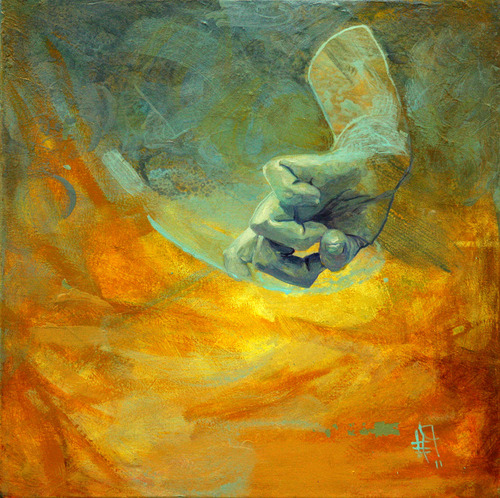
[/zl_mate_code] Source: mydarkenedeyes.tumblr.com
2. Mary E. Bresciani, Radioactive
(2013)
[zl_mate_code name=”Green Dynamic” label=”4″ count=”1″ who=”div” text=”Five fingers are laid out matter-of-factly before us in black and white.
We can see bones glowing underneath the skin because here we have x-Ray vision. “]
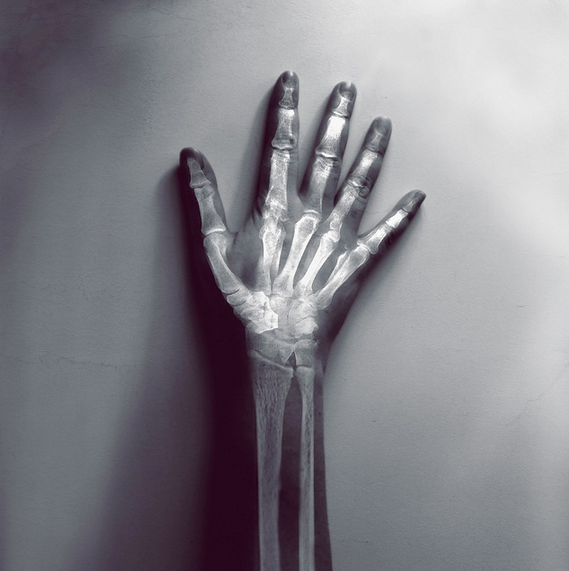
[/zl_mate_code] Source: unplu66ed.tumblr.com
3. Hong Sungchul, String
Mirror (2009)
[zl_mate_code name=”Pink Dynamic” label=”1″ count=”1″ who=”div” text=”In a photograph printed on elastic strings, two pairs of hands reach a cross the distance, grabbing wrists and doubling the bond by pulling gently, elegantly forward with the other hand. “]
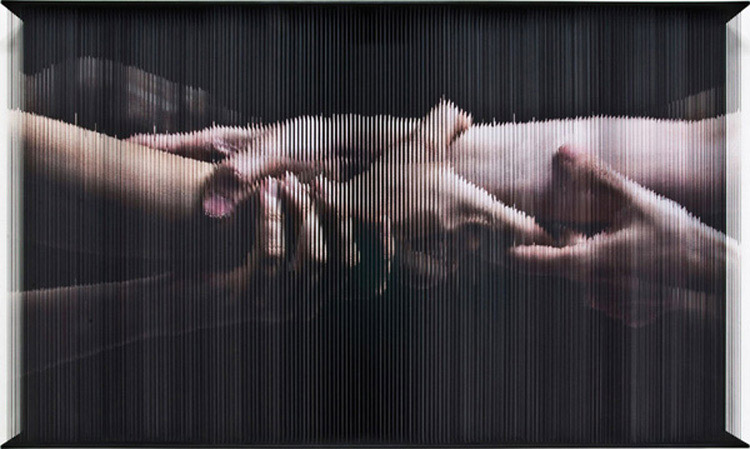
[/zl_mate_code] Source: insolacion.tumblr.com
4. Shohei Otomo
[zl_mate_code name=”Blue Dynamic” label=”2″ count=”1″ who=”div” text=”A hand that’s drawn in black and white makes the red elastic glow.
The rubber band is stretched around the thumb from pinky to index finger, locked and loaded with the potential energy to snap.”]
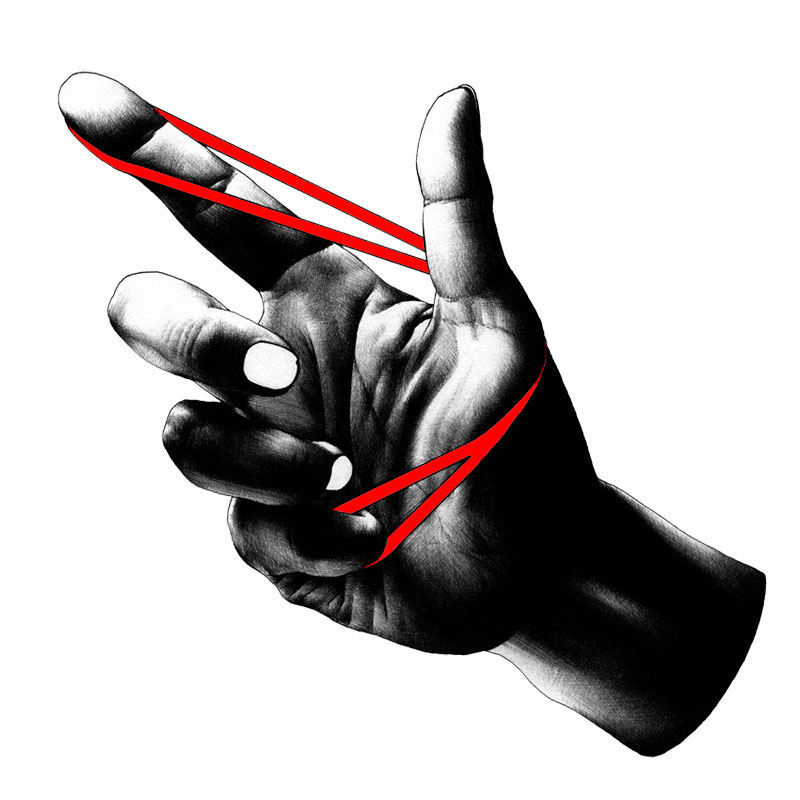
[/zl_mate_code] Source: insolacion.tumblr.com
5. Truls Espedal, The
Return (2010)
[zl_mate_code name=”Orange Dynamic” label=”3″ count=”1″ who=”div” text=”A tiny bird is coming in for a landing on an outstretched finger.
The hand emerges from the center of the canvas’ dark bottom, its palm in the exact middle of a green-brown background.”]
 [/zl_mate_code] Source: fer1972.tumblr.com
[/zl_mate_code] Source: fer1972.tumblr.com
6. Corinne Reid
[zl_mate_code name=”Blue Dynamic” label=”2″ count=”1″ who=”div” text=”This hand extends from the bottom in the same way, but it’s joined by a scratchy vine of black and grey that surrounds it and the pencil it holds.
Does the creepy vine carry the words for the pencil to write or prohibit them?”]
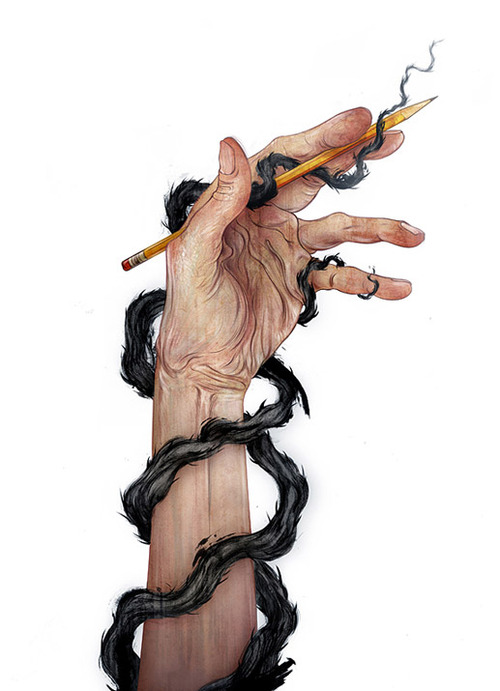
[/zl_mate_code] Source: insolacion.tumblr.com
7. Daniel Grzeszkiewicz,
I’m Back
[zl_mate_code name=”Green Dynamic” label=”4″ count=”1″ who=”div” text=”A hand breaks through a wall, dramatically pulling itself through the hole it made.
The wall drips black and the hand is hunched forward like it’s on the prowl for more wall to break.”]
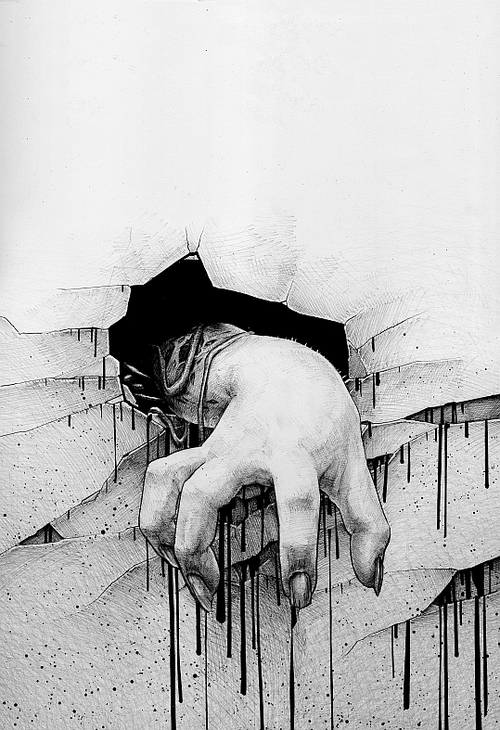
[/zl_mate_code] Source: perpetu8.tumblr.com
8. artist unknown
[zl_mate_code name=”Pink Dynamic” label=”1″ count=”1″ who=”div” text=”Two pink hands melt in a sea of turquoise.
One is just fingers but the other is cut off at the wrist, stretching up to avoid the fate of becoming liquified pink.”]

[/zl_mate_code] Source: cmd-zeta.tumblr.com
9. Bethany LeAnne, Creating
Disasters
[zl_mate_code name=”Orange Dynamic” label=”3″ count=”1″ who=”div” text=”Two hands cup a lightening bolt that springs from a tiny glowing cloud.
There’s real power here, or at least a deep desire for it – a need to feel able to do more.”]
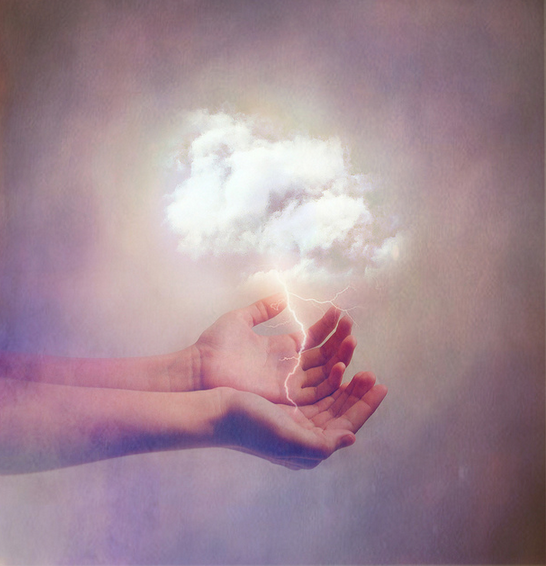
[/zl_mate_code] Source: unplu66ed.tumblr.com
10. Oriol Angrill Jordà, Hand by
Hands (2007)
[zl_mate_code name=”Blue Dynamic” label=”2″ count=”1″ who=”div” text=”A hand has hands for fingers.
Five different hands move and stretch from the same palm, like we’re looking into multiple dimensions of expression.”]
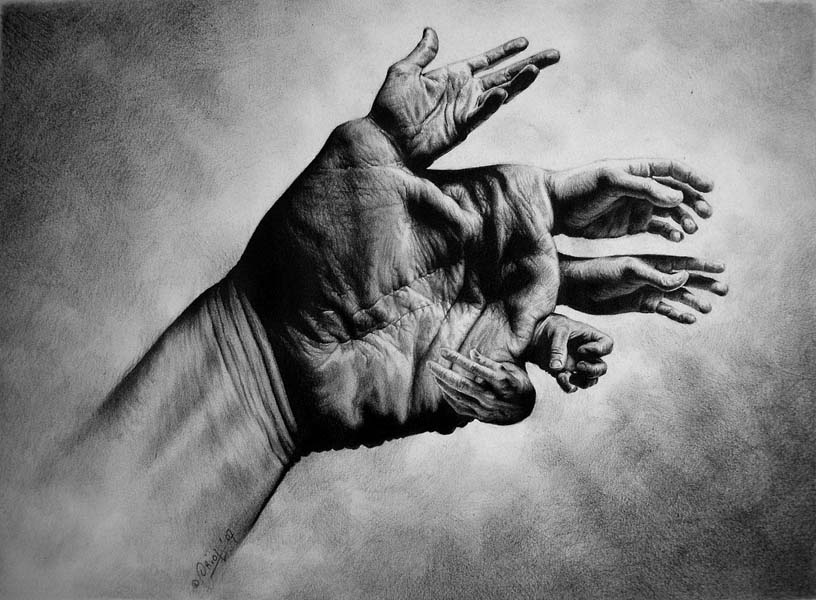
[/zl_mate_code] Source: insolacion.tumblr.com
Mar 8, 2013 | interviews, painting
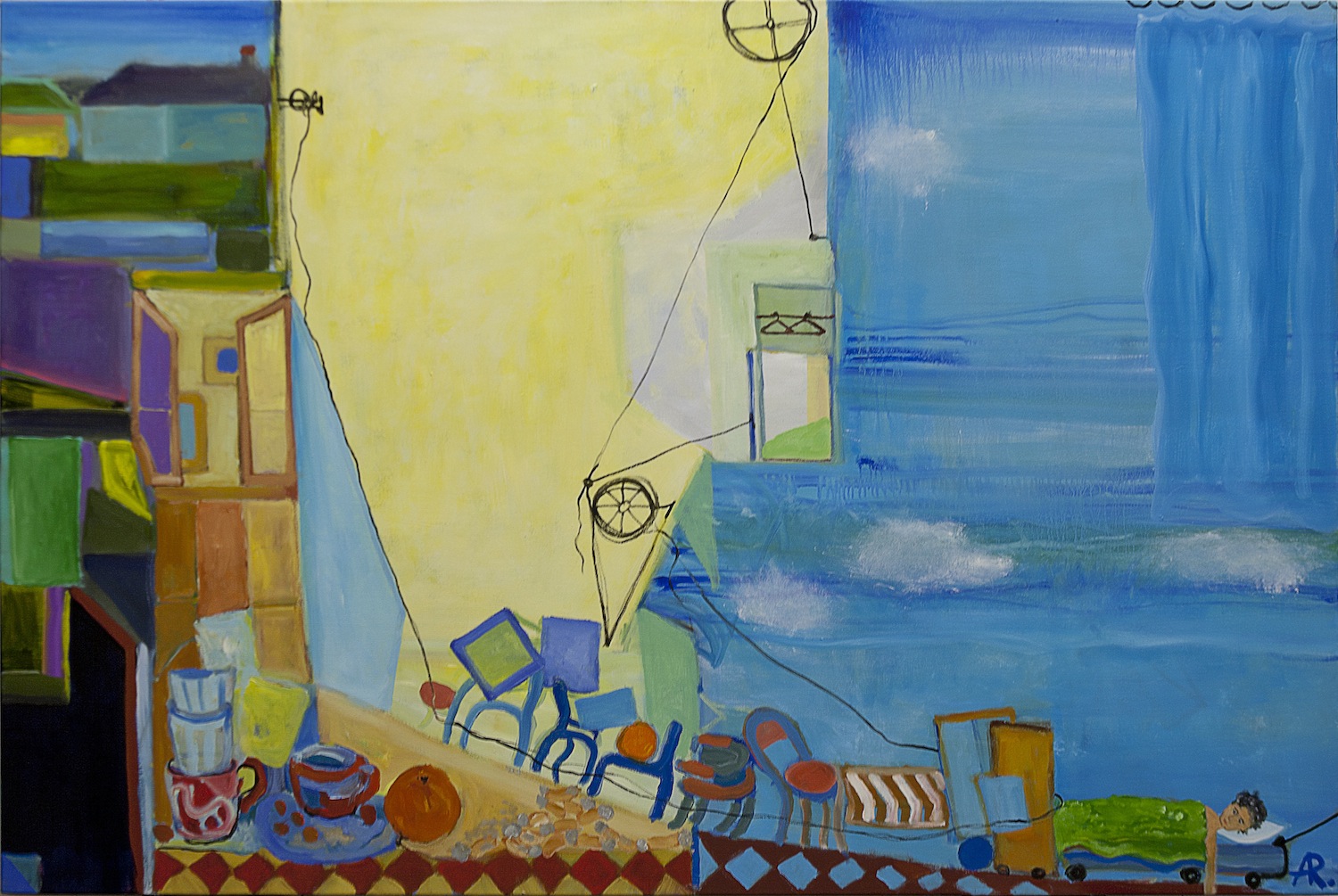
“Moving in with Richard Diebenkorn”
Alexandra Rozenman is an artist now living and working in New England after coming to America as a political refugee from Moscow at the end of the 80s. Her paintings reveal simple scenes of beauty and most often peace – a utopia so perfect that it could only exist within four walls of canvas. Her new show, “Transplanted” continues her exploration of scenic storytelling, using color and shape to serve as a narrative for each viewer to interpret on their own.
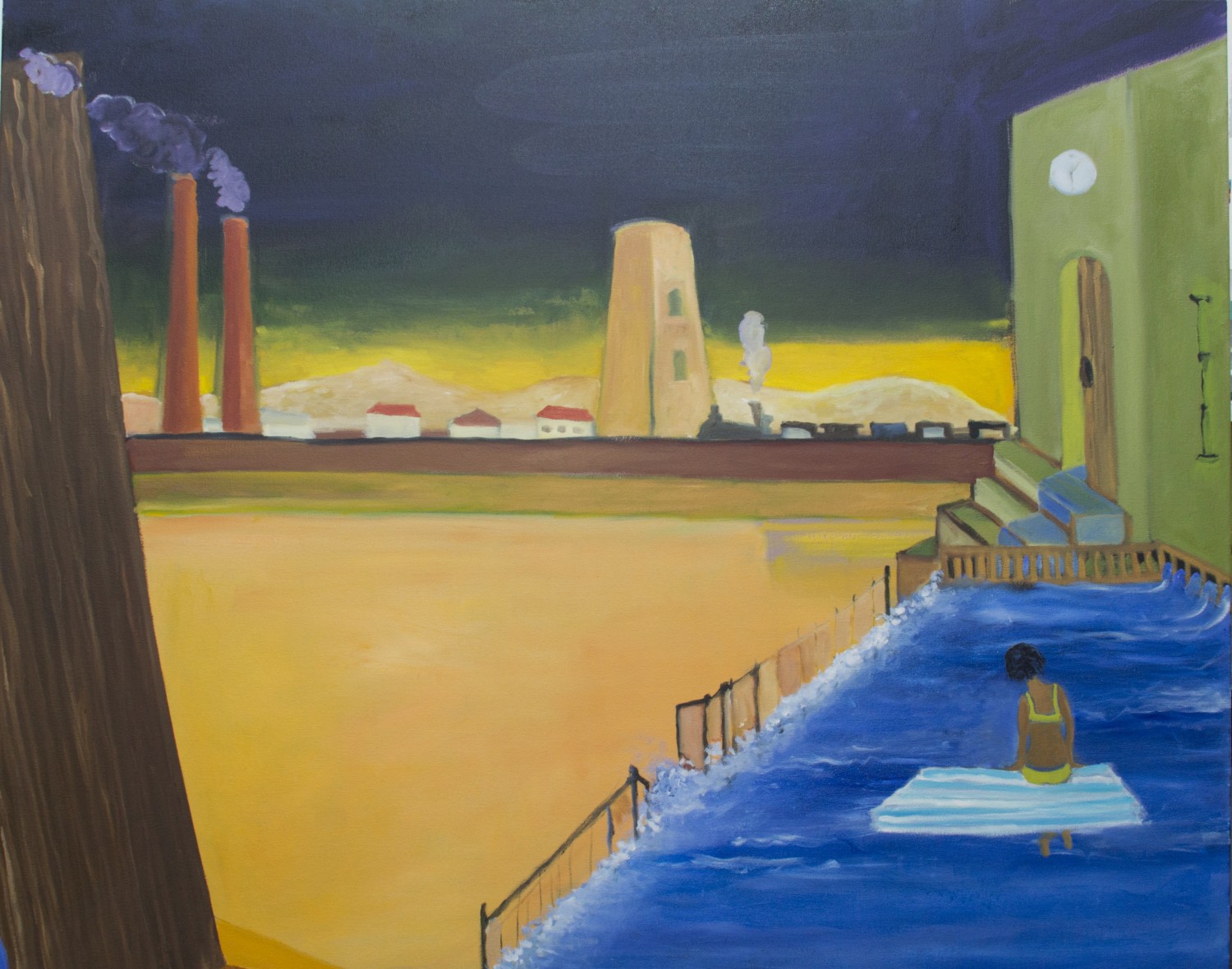
“Moving in with de Chirico”l art
What was the first thing you can remember painting?
I started painting when I was 5 taking classes at the Fine Art Museum in Moscow. There is a photograph taken at the dacha that my parents rented in 1977 for the summer. I am sitting at the easel looking very serious. Painting on an easel tells a story the same way my work does now: there is a house in the woods and a fairytale character: Petrushka ! ( Petrushka is a stock character of Russian folk puppetry, known at least since 17th century). I would not be surprised if I found out about him from a Stravinsky ballet that has the same name, because may be there was not always paper, but the theater was affordable, wonderful and available. This painting has two big eyes in the sky – one of the images in my work for the last 20 years.
Do you have any routines required for the creation of your work?
In ideal world I prefer to work in the morning after 2-3 cups of strong black tea. Afterwards I eat good lunch and have a nap! Then work for 2-3 hours more. I like to feel alienated when I work. I like listening to a very loud music (something nobody will guess I do). With the schedule I have right now ( I started my own private art school www.artschool99.com) and am teaching almost every day for 5 hours or so). I am trying to cut out pieces of time for myself and just make it work. A tight schedule became one of my art materials:)
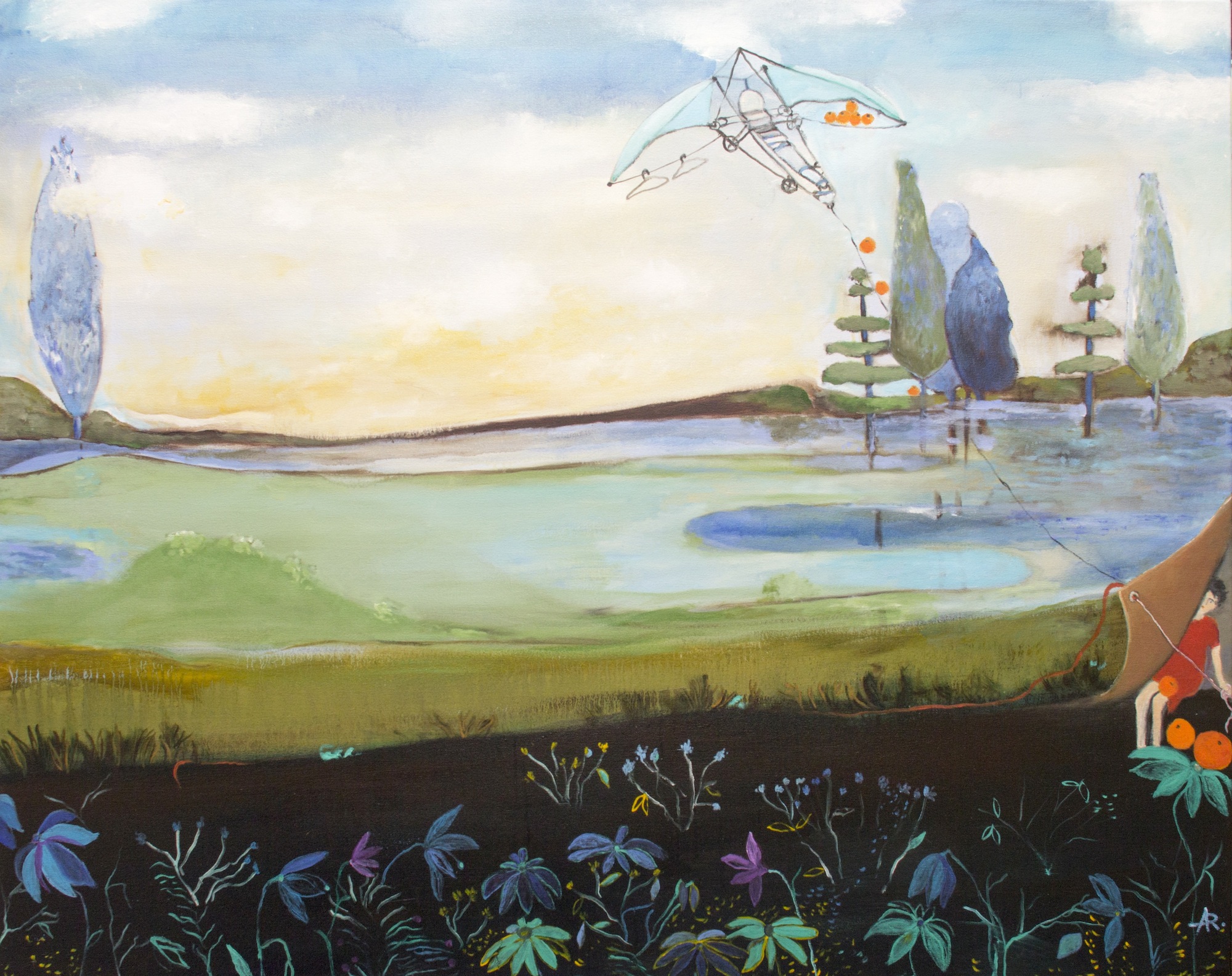
“Moving in with Leonardo”
How do you find the right color scheme for each scene?
I don’t think I find the right color. I allow colors to find me. Paint floats and has its own mind based on subject matter, technique, materials, time, space. It is alive for me and my goal is to allow it to grow up (like a plant) and only later – some time in the middle of the painting process – start changing it, based on my instinct, ideas and goals. Each painting is different.
Where do you hope to take the viewer with your paintings, and why?
I tell my viewer a story, allow them to enter into the world of magic and hope that they will get curious and will spend some time thinking and looking around. My work expresses longing for understanding and being understood, for non-belonging and finding a place to be. Playfulness in my work points to instability of life – visually, culturally and literally. I am working playing on the conflicts between identity and assimilation, tradition and modernity, so each viewer can take my messages and interpret them any way they want and discover for themselves. I want the viewer to start wondering after looking at my paintings, if maybe things are a bit different sometimes, maybe something can still be both beautiful and interesting at the same time.
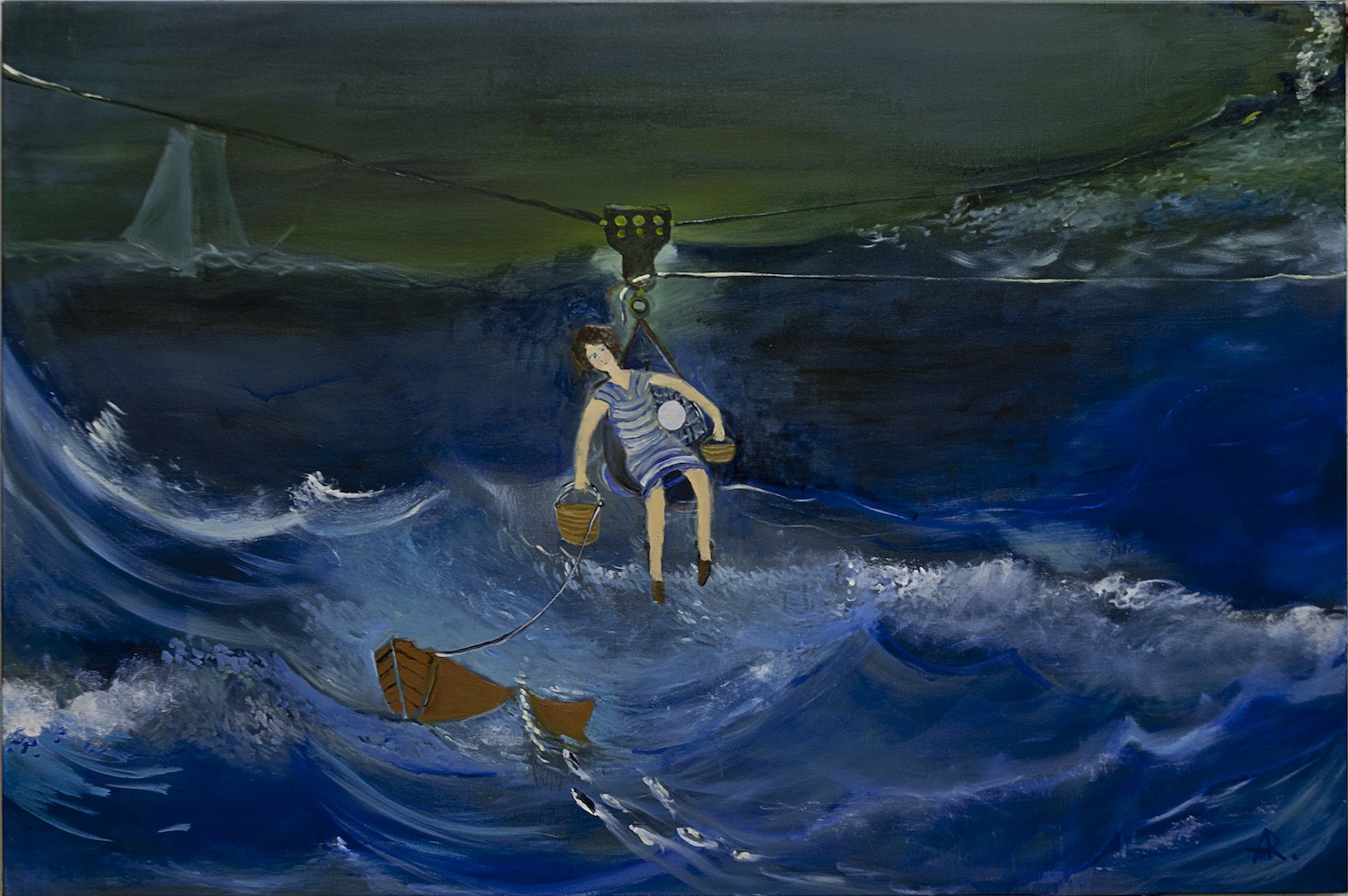
“Moving in with Winslow Homer”
How would you describe your style of painting?
In todays world “style” is usually a combination of many different styles, isms and personal history or/and an artists place in the world. Inside my work liquid layers and thick abstractly painted surfaces meet familiar landscapes, and create a place where I explore the world through the mixture of autobiography, symbolism and philosophy. I am a mix of Moscow alternative cultural scene of the 1980’s ( my visual vocabulary, environments, approach to a hidden metaphor are all coming from their ), Painting for paintings sake, Abstract Expressionism, New image painting, Fauvism , 16th-17th century Romanticism and Symbolism can all be found in my work.
My favorite artists are: Bruegel, Vermeer, Turner, Matisse, Richard Diebenkorn, Joan Snyder and Frida Kahlo. For many many years my work has been compared to Marc Chagall. I like his early work and am even really related to his first wife (Bella Rosenfeld) – my Great Grand father is her younger brother, but I don’t think that he is my main influence. However, if there is a group of artists called “Jewish Artists” I am sure I am a part of it.
How does “Transplanted” expand upon the styles and themes your work has already been exploring?
For me “Transplanted” has a seed of placing myself in the world of art. Thoughts and practice on what it is to be a painter in the 21st century. Saying that replanted artists, immigrants from the disintegrated homeland, like myself, survive against all odds
And, kind of a random one: what’s your favorite color?
I don’t think I have one favorite color. I love color. It depends on what it is for. There is one color that I strongly dislike: pink. I agree with Matisse who said that:”The use of expressive colors is felt to be one of the basic elements of the modern mentality, an historical necessity, beyond choice.”
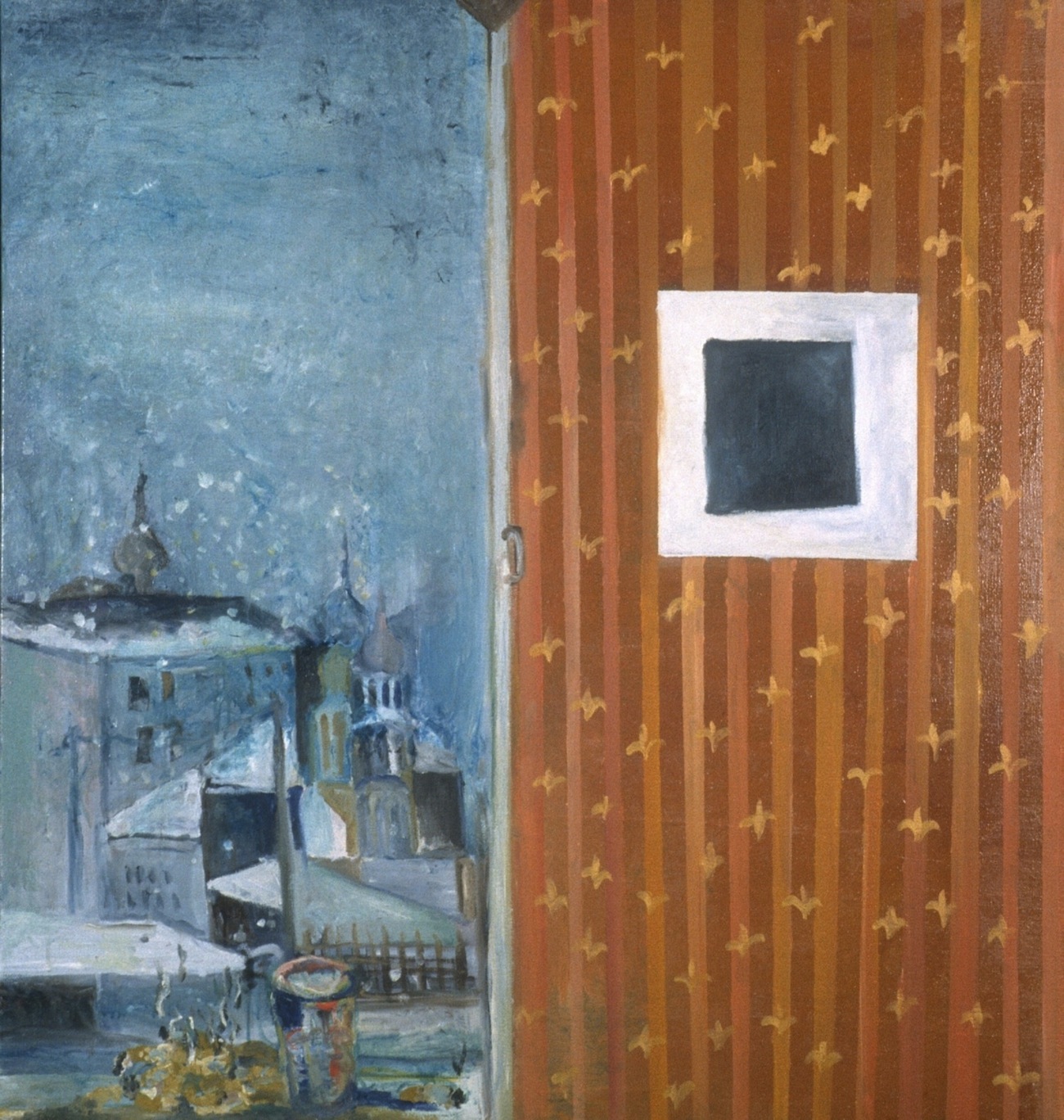
“Re-thinking Malevich in Moscow”
From Alexandra: “Re-thinking series was 15
years ago and is sort of a mother of ‘moving in.'”
See Alexandra’s website for more of her work.
“Transplanted” is on view at the Multicultural Arts Center in East Cambridge, MA from January 3 – April 8, 2013.
Feb 21, 2013 | illustration, interviews
Contemporary artist Shari Rubeck uses watercolor and acrylics to create simple scenes filled with glamour, curiosity and chaos. Each brightly colored artwork beautifully explores the human psyche, with a suggested meaning that’s left open to interpretation . Her style is multi-faceted, each series develops its own sort of visual voice that usually involves some kind of animal imagery along with a sense of raw purity, the paint allowed to run and swirl organically in confined areas of the composition.
“Lion Girl” is a watercolor and graphite work that shows a woman standing defiantly, hands on her hips as her serene face is overlaid with that of a powerful lion roaring, the color of his mane melting into her fiery tethered dress. A girl in a blue dress leans impossibly far to the right in “Sharp Intrusion,” her head hidden by a glowing red space helmet with five birds flying towards it, as if they were working as a team to knock her over.
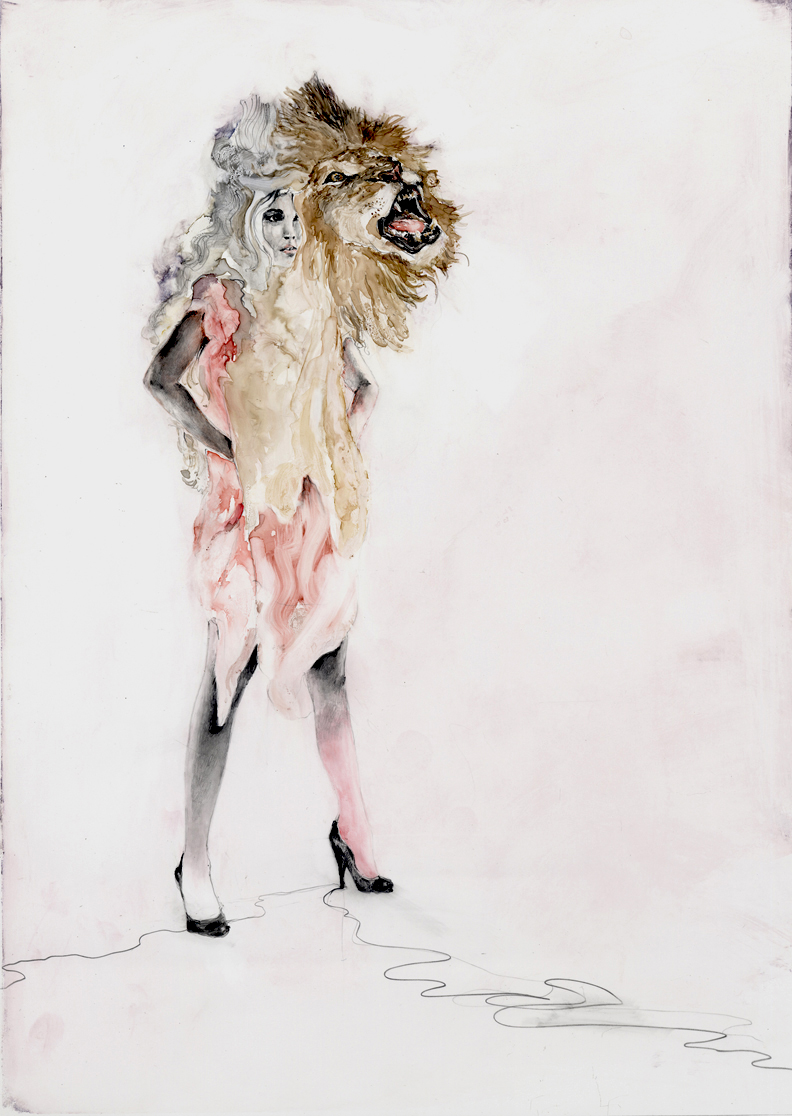
What’s the first thing you can remember painting?
The inside of my parent’s station wagon with crayons is one of my earliest artistic memories. But my first memory of painting would have to be when I received a good quality set of brushes and went to town filling large pieces of watercolor paper with all varieties of brushstrokes until I could think of no more.
What do you think watercolor adds to the creation of a piece?
Watercolors are fresh, light and have an immediate quality. I am working to bring that sense of luminescence to some of my larger acrylic paintings on linen.
What do you like about including animals in your work? Particularly bunnies?
Animals are a big part of my life and psyche. They are present often in my thoughts, dreams and work. They are my connection to the subtle workings of the world. They are magical, intuitive, and fierce, connected and make wonderful story tellers. As a human race we have turned our backs on them. Should technology suddenly drop off we would look to them for knowledge, guidance and find ourselves thanking them once again for sustenance.
The Bunnies arrived on the ‘scene’ soon after I began ‘working’ a puppet, named ‘Bunny’ for my son in his struggle to find comfort of sleep at bedtime. Bunny has a tremendously silly, but slightly cynical sense of humor and became my artistic story teller. The bunnies illustrate humor in the serious and not so serious sides of life’s events and emotions.
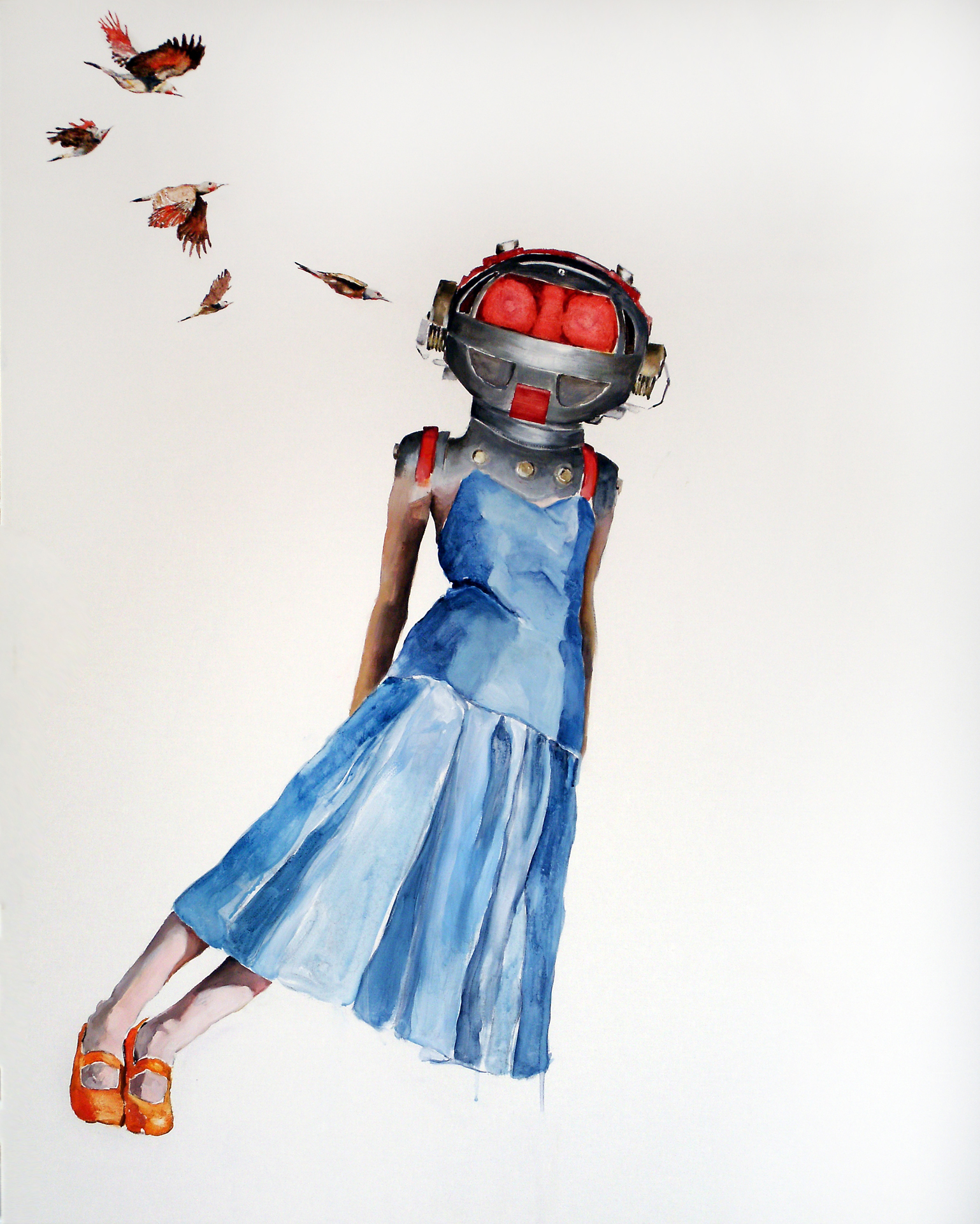
Who are the people your works represent?
The figures in my work represent all of us – humans and humanness. Some pieces are more representative of my own self and direct experiences, while others are observations from distant perspectives.
What do empty backgrounds allow for in your work and how do you choose a background for each character?
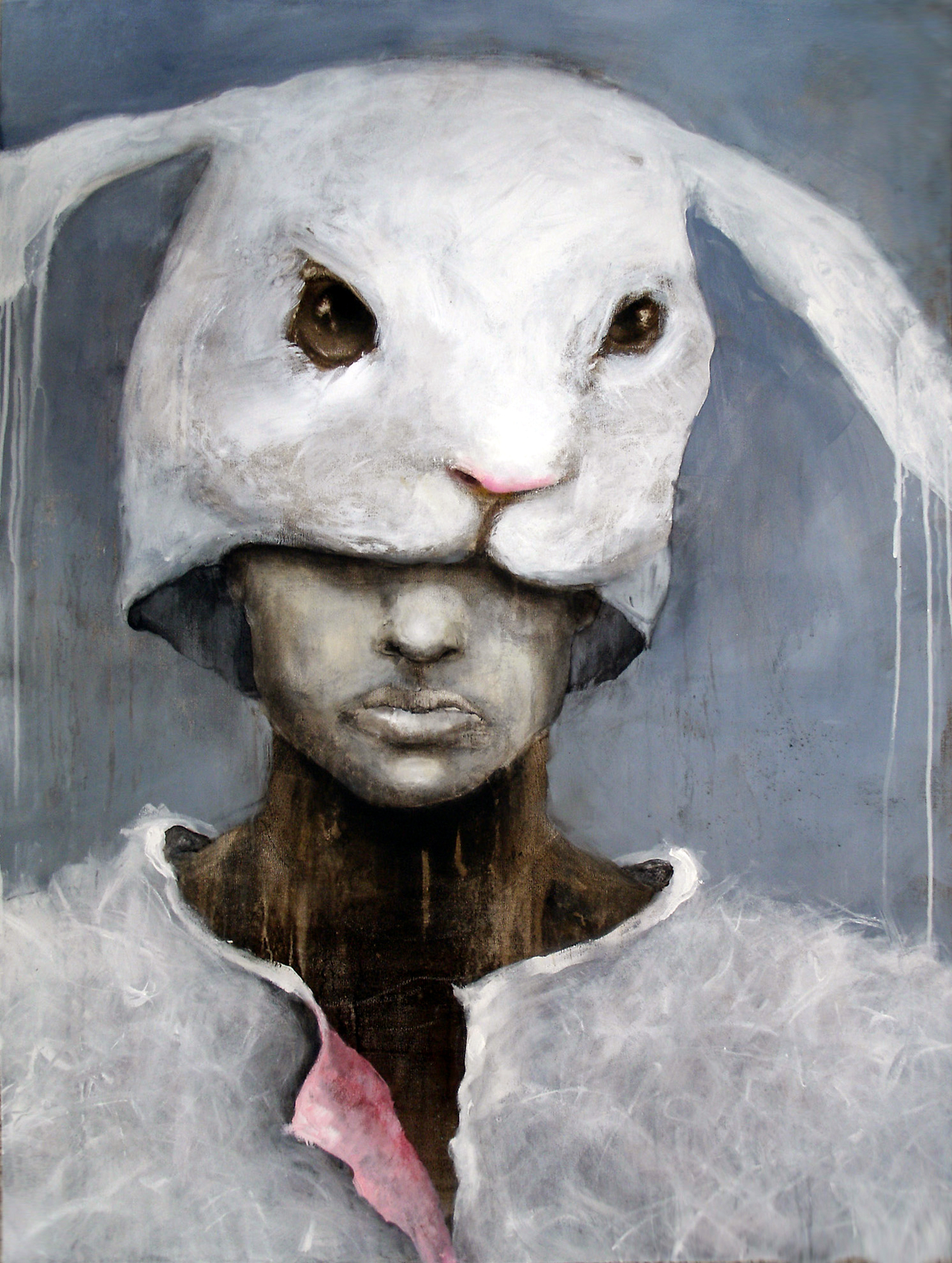 I fluctuate between giving color & detail to the areas surrounding my characters and leaving them alone in their space. An intense drive to express an idea, message or observation leaves me feeling that the figures can communicate strongly without anything around them. The blank or negative space is carefully considered and tells much about the tensions while simultaneously allowing for areas of visual repose.
I fluctuate between giving color & detail to the areas surrounding my characters and leaving them alone in their space. An intense drive to express an idea, message or observation leaves me feeling that the figures can communicate strongly without anything around them. The blank or negative space is carefully considered and tells much about the tensions while simultaneously allowing for areas of visual repose.
What do you like about the image of a figure with a mismatched head?
A figure with mismatched head…isn’t that what we all are? Or I could elaborate and say that we are all different degrees of mask wearers. My Ego series transformed into the Alter Egos. The first Alter Ego shows a human wearing a bunni mask or a bunni wearing a human – there is some ambiguity. I have always been intrigued by masks and what they can represent. There is so much that goes on ‘backstage’. I do also love the weight of a head that is too large for its body; whether mechanical or creature.
What are some of the art websites or blogs you follow?
Some sites that I am affiliated with or keep up with are: BlueCanvas, Twitter, ARTCZAR, Elisa Contemporary, Artsrogueisland, GalleryZ, ColoColo, Hallway Gallery, and now of course ThingsWorthDescribing. I find many intriguing sites on random searches but may only visit them once.
Minor Situations is her newest series of bunny paintings that’s by far the most adorable – fluffy floppy characters shown after a small disappointment like burning toast, letting balloons go, or spilling milk. Their little bunny faces look so downtrodden, and their long ears allow for an exaggerated sense of unhappiness as they fall down the back of every bunny. Simple scenes against bright-colored backgrounds, these works are lovable in a silly sad way.
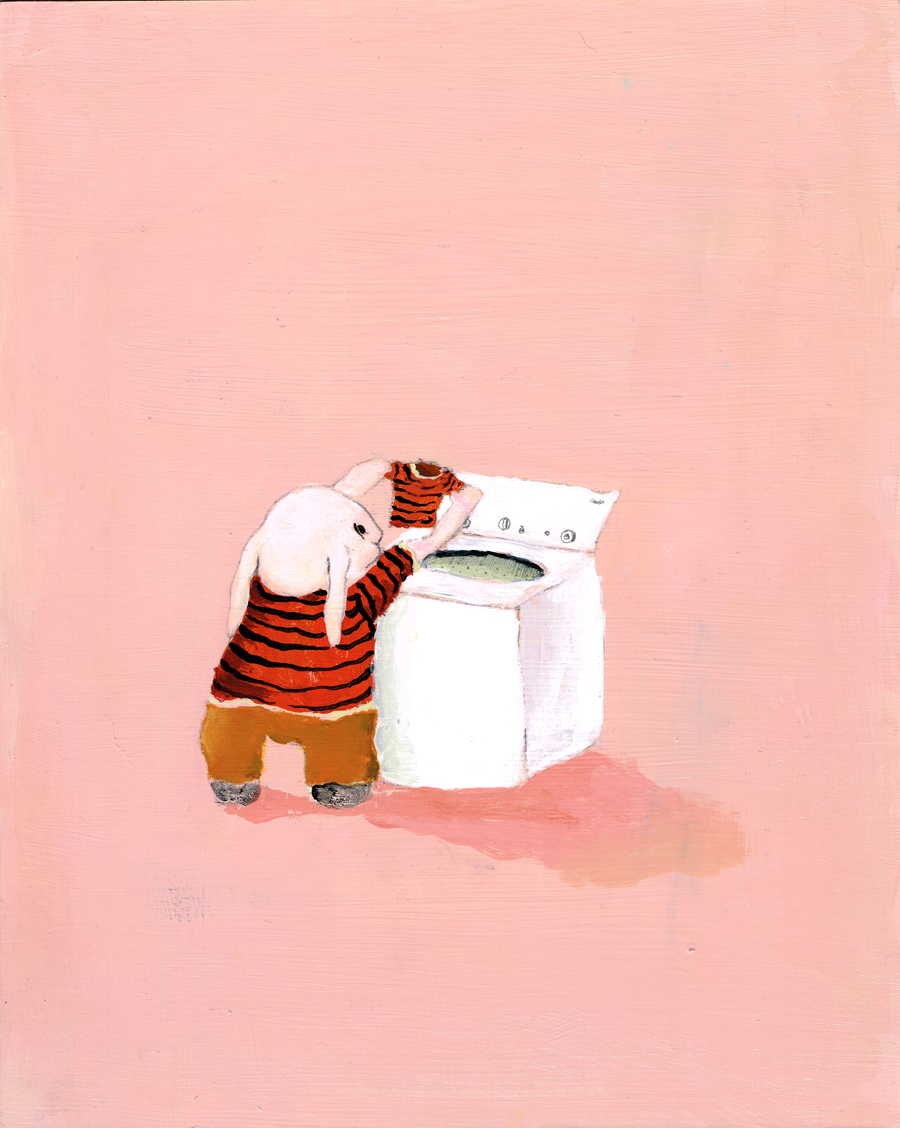
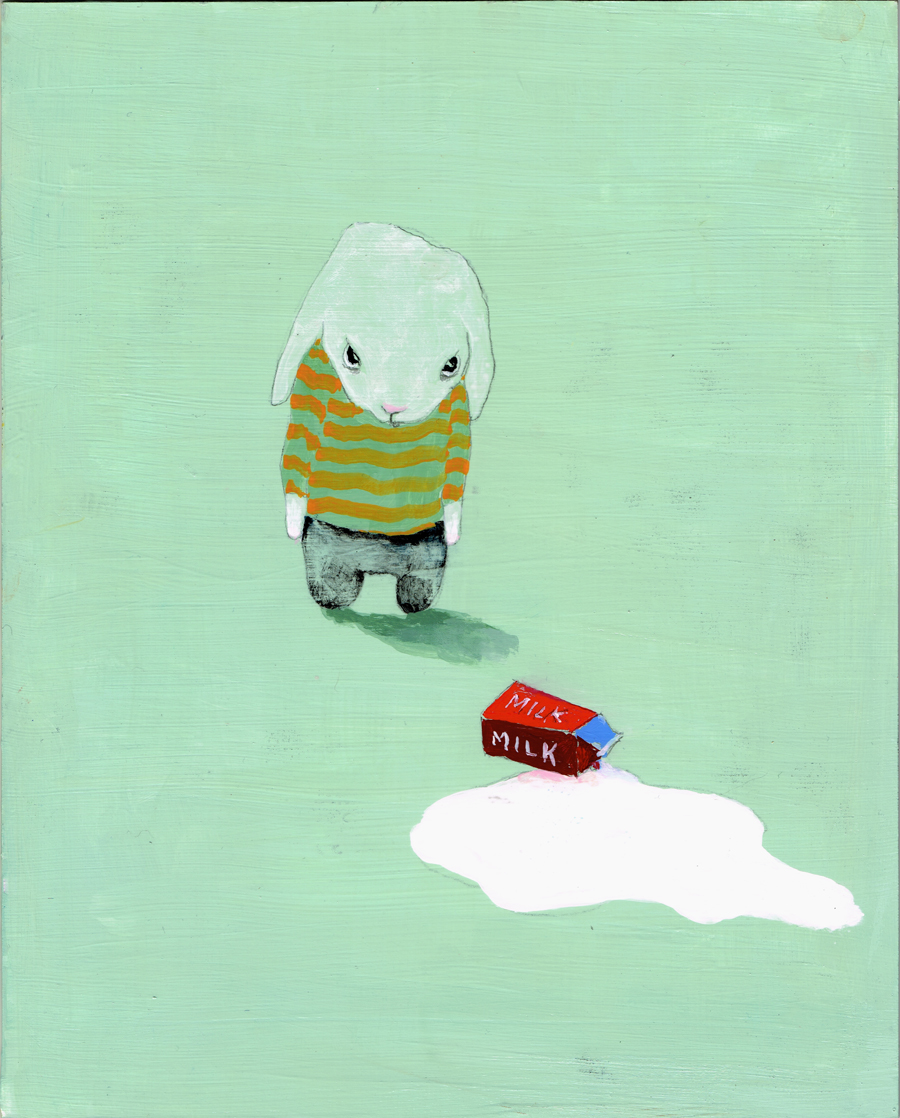
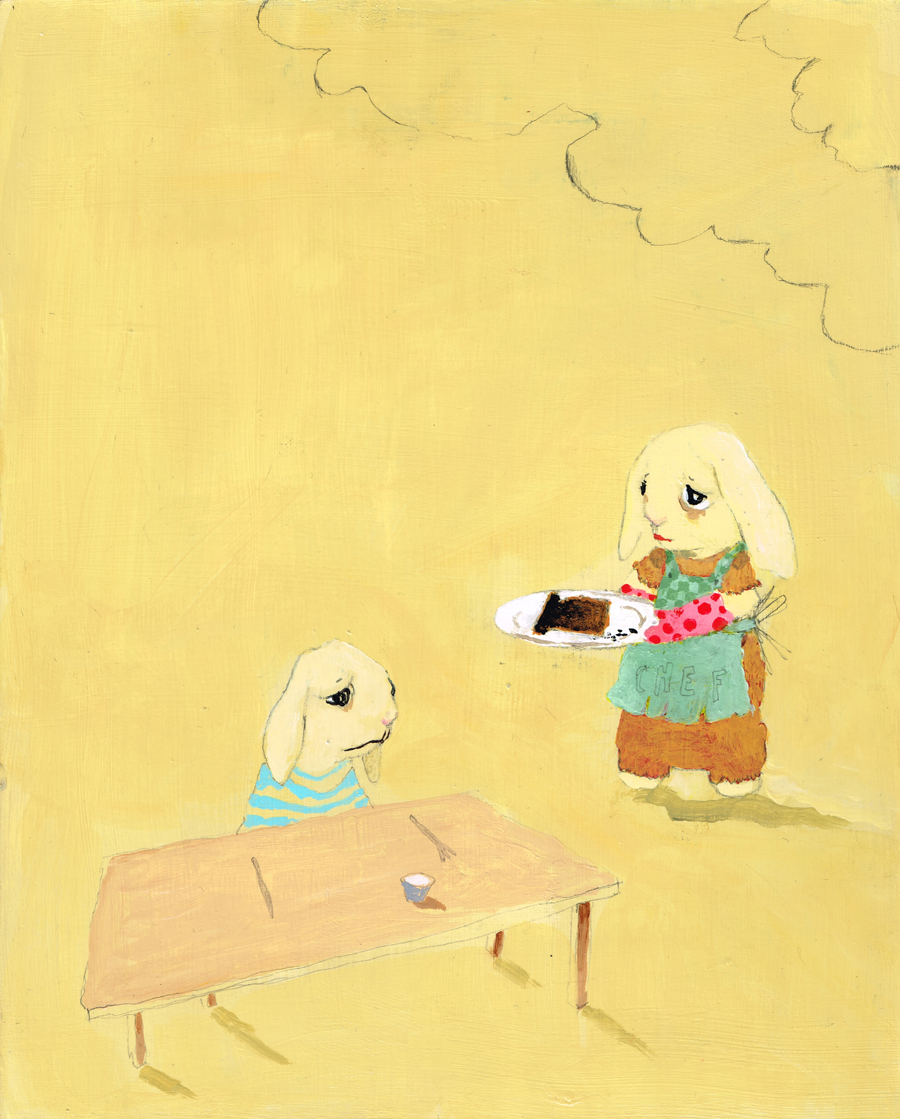
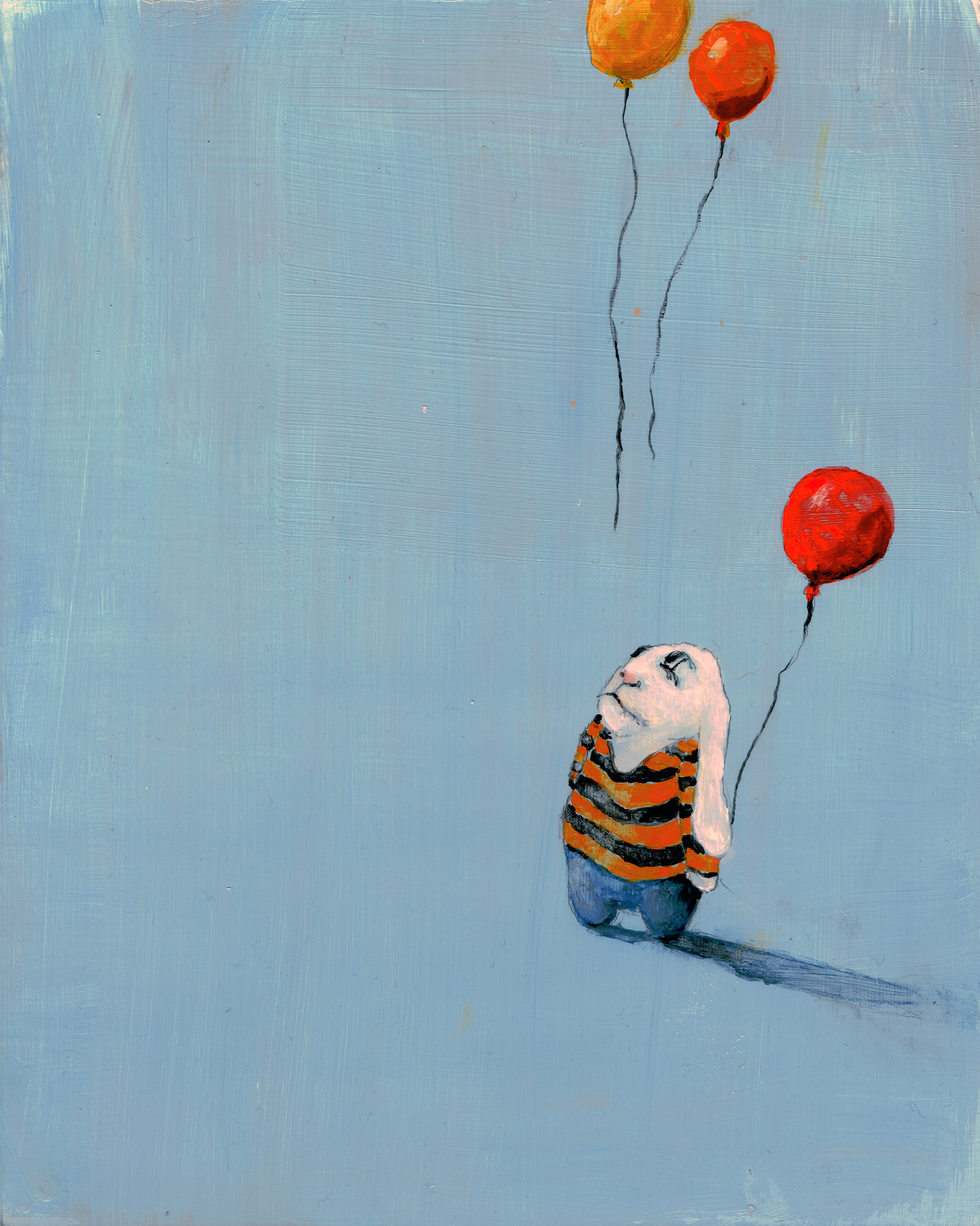
For more of Shari’s work, head to her website Art in Mind.
 [/zl_mate_code] Source: fer1972.tumblr.com
[/zl_mate_code] Source: fer1972.tumblr.com
























